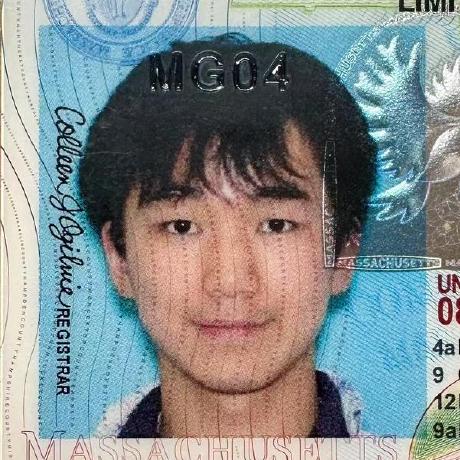CircuitCim Framework
Published:
Framework
To code SPICE, the main challenges are: how do you keep the component information, and how do you tell which value goes where
Here we define the data structure to store the general resistor info
typedef struct {
int n1, n2;
float R;
} Res;
Sources are a bit complicated. Let’s just support DC for now
typedef struct {
int n1, n2;
float I;
} ISrc;
Generic Structure
We maintain a generic Comps[] array to keep track of all circuit components. Each entry is a generic struct Component, with each device’s type and parameters, and functions pointers to stamp (add it to matrix)
typedef struct Component {
CompType type; // let it be STA_T for now
void (*stamp)(struct Component*, float[][MAT_SIZE], float[]);
/* void (*update) (struct Component*, float[][MAT_SIZE], float[]); */
union {
ISrc isrc;
Res res;
} u;
} Component;
// component registry
Component comps[MAX_COMPS];
int ncomps; // number of components in the circuit
Registering Components
Now we need to define the component register functions add_res() and add_isrc()
void add_isrc(int n1,int n2, TransientSource *src) {
Component *c = &comps[ncomps++];
c->type = STA_T;
c->stamp = isrc_stamp;
c->u.isrc = (ISrc){n1,n2, src};
}
void add_res(int n1, int n2, float R) {
Component *c = &comps[ncomps++];
c->type = STA_T;
c->stamp = res_stamp;
c->u.res = (Res){n1,n2,R};
}
Stamping
Now time for node voltage analysis! Let’s count all currents leaving the node as positive.
The ground node is registered as -1.
void res_stamp(Component *c, float Gm[][MAT_SIZE], float I[]) {
(void)I; // not used
Res *r = &c->u.res;
float G = 1.0f / r->R;
int n1 = r->n1, n2 = r->n2;
if (n1 != -1) Gm[n1][n1] += G; // current leaving
if (n2 != -1) Gm[n2][n2] += G;
if (n1 != -1 && n2 != -1) { // current entering
Gm[n1][n2] -= G;
Gm[n2][n1] -= G;
}
}
void isrc_stamp(Component *c, float Gm[][MAT_SIZE], float I[]) {
(void)Gm; (void)I;
ISrc *s = &c->u.isrc;
float Ieq = s.I
int n1 = s->n1, n2 = s->n2;
if (n1 != -1) I[n1] += Ieq;
if (n2 != -1) I[n2] -= Ieq;
}
Test Driver
We first write a simple driver program that reads a circuit, runs our simulation block, and returns the result in a CSV
#include <stdio.h>
// each test must define this:
void setup(void); // defined in test programs
void stamp_static(void); // adds resistors to the matrix
void print_header(FILE *f); // write CSV header line
void print_row(FILE *f); // write one line of data each time step
// global nodal matrix, state, and time
float G[MAT_SIZE][MAT_SIZE];
float Ivec[MAT_SIZE];
float v[MAT_SIZE], v_prev[MAT_SIZE];
/*
extern float G_sta[MAT_SIZE][MAT_SIZE];
extern float I_sta[MAT_SIZE];
extern float G_lin[MAT_SIZE][MAT_SIZE];
extern float I_lin[MAT_SIZE];
*/
float t;
extern float time_step; // time step for simulation
extern int nsteps; // number of steps for simulation
int main(void) {
// zero‑out everything
memset(G, 0, sizeof G);
memset(Ivec, 0, sizeof Ivec);
memset(v, 0, sizeof v);
memset(v_prev, 0, sizeof v_prev);
t = 0.0f;
// open CSV
FILE *fp = fopen("results.csv", "w");
if (!fp) { perror("fopen"); return 1; }
print_header(fp);
// build the circuit (calls your add_*()s)
setup();
// simulate
clear_system();
stamp_static();
clear_system_sta();
/*
for (int n = 0; n < nsteps; n++) {
t = n * time_step;
update_all(t);
print_row(fp); // write a row of data
}
*/
fclose(fp);
return 0;
}
Our job is to write stamp_static() to add the resistor contribution to G and I.
Your First Circuit
Time to build a first circuit! It will be a simple current source with a resistor. There will only be one node 0 and the ground node -1
// Source-resistor circuit
#include "circuit.h"
#include "driver.h"
#include "input_funcs.h"
#include <string.h> // for memset
float time_step = 5e-6f; // these are arbitrary
int nsteps = 500;
void setup(void) {
add_isrc(0, -1, 5);
add_res(0, -1, 10);
nnodes = 1;
}
// csv header
void print_header(FILE *f) {
fprintf(f, "time,v0\n");
}
// csv row
void print_row(FILE *f) {
fprintf(f, "%g,%g\n", t, v[0]);
}
and you can play around and add more linear components.
